In the annals of human civilization, the Indus Valley Civilization stands out as a sterling example of innovation and advancement. Representing one of the earliest known organized human societies, this ancient civilization was remarkable for its wealth of technological, architectural and agricultural progressions. Spanning diverse fields such as agriculture, urban planning, craftsmanship, script development, and scientific explorations, the civilization demonstrated unsurpassed skill and brilliance. This discourse aims to facilitate a comprehensive exploration of these intriguing aspects of the Indus Valley Civilization, thereby offering a profound understanding of their influential contributions to human society.
Innovation in Agriculture
Innovation in Agriculture: Advanced Farming Techniques in Indus Valley Civilization
The Indus Valley Civilization, also known as the Harappan Civilization, was remarkable in its application of innovative, advanced farming techniques. The people took advantage of the fertile land near the Indus River, harnessing the river’s annual floods to bring essential nutrients to their crops. They used simple yet effective tools made from local materials like wood and copper. Their tools included plows for tilling the soil, sickles for harvesting, and grinding stones for processing harvested crops.
Discovery of Crop Rotation
Perhaps the most groundbreaking agricultural innovation of the Indus Valley Civilization was the discovery of crop rotation. The people of the Indus Valley recognized the benefits and importance of growing different crops in a location each season. They alternated between summer and winter crops. For instance, they would plant wheat in the winter and barley in the summer. This early form of crop rotation helped to prevent soil exhaustion and increase agricultural yield, essential for supporting the highly populated cities.
Novel Irrigation Methods
Regarding water management and irrigation, the civilization utilized methods far ahead of their time. They dug sophisticated canal networks and used them to irrigate fields, essential in the arid climate of the Indus Valley. Some of the water channels were several kilometers long, while others were much shorter. They engineered these water channels with precise gradients to ensure efficient water flow.
In the flat plains, they implemented basin irrigation, constructing raised boundaries around fields. This controlled the water’s distribution, maintaining the right moisture level in the soil to avoid both underwatering and waterlogging.
These innovations in irrigation and water management are clear examples of how engineering and agricultural advancements contributed significantly to the sustained growth of the civilization. The combination of advanced farming techniques, crop rotation, and efficient irrigation methods allowed the Indus Valley Civilization to thrive in a challenging environment.
Feeding the Masses
These agricultural innovations meant that the people of the Indus Valley Civilization could produce a surplus of food. This surplus was stored in granaries for distribution during times of food shortages, particularly during seasonal changes or droughts. The civilization was thus able to support a large population in its cities, a feat of social organization likely driven by the advances in agriculture.
Scholars Suggest
Furthermore, scholars suggest that the Indus people developed a system of standardized measures, an advanced understanding of tides, and a detailed knowledge of the stars and their movements. This in-depth knowledge would have been incredibly useful for farming, allowing for accurate planting and harvesting times, better irrigation, and more successful crop yields.
Summary
Wrapping up, it’s clear to see that the significant growth and prosperity of the Indus Valley Civilization can be largely attributed to its advancements and innovations in farming technology and agricultural practices. Early examples these include an understanding and application of crop rotation, the implementation of efficient irrigation systems, and the unprecedented ability to sustain a large population. Undoubtedly, these agriculture-oriented achievements highlight a civilization that was leaps and bounds ahead of its era.
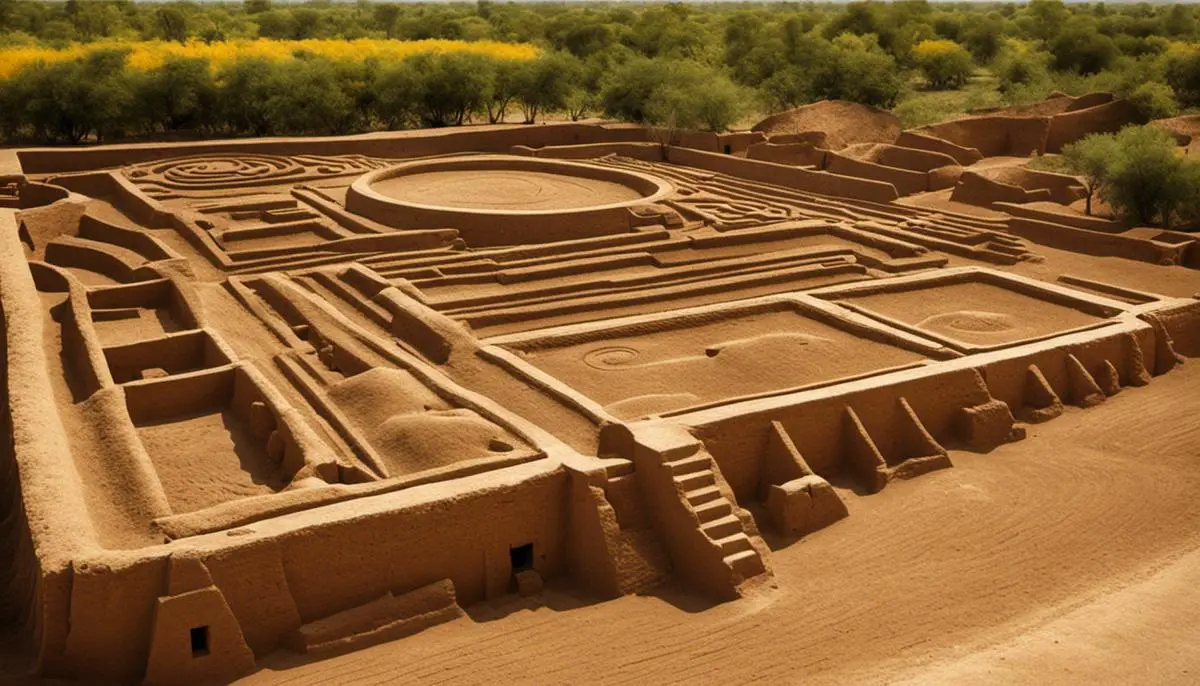
Urban Planning and Architecture
City Planning: The Order of Indus Valley
Moving on, the field where the Indus Valley Civilization truly showcased its penchant for groundbreaking innovation was city planning. They meticulously crafted their urban layouts with an exhibit of high level of organization and conformity, a testament to a potent central authority. This unequivocal standardization is demonstrated in the architecture of both residential and public structures. Towns took on a meticulous grid pattern, with streets running north-south and east-west, intersecting at right angles and creating an orderly grid. Complementing this were fortified walls, offering a formidable defense strategy to each city.
Sewage and Drainage Systems: Ahead of Their Times
Perhaps one of the civilization’s most notable accomplishments in the architectural domain was their highly advanced drainage system that included a network of underground channels running beneath streets and buildings. Every house in a city, whether small or large, had access to this system. It provided a level of sanitation that was not commonly found in other ancient civilizations. Such a standardized, citywide, sanitation system implies a sophisticated understanding of urban planning and public health.
Housing and Building Structure
Indus Valley houses were constructed in a standardized manner, with accommodations for cooking, bathing, and waste disposal. The houses were typically constructed of uniformly shaped baked bricks, a technology that was quite advanced for the period and not seen in contemporaneous civilizations. Some larger buildings, possibly public or communal structures, display particularly sophisticated architectural techniques, such as precise measurements, standardized bricks, air-conditioning structures, and cleverly designed water supply systems.
Construction Materials: Baked Bricks and more
The materials used in constructing buildings, roads, and other infrastructure evidenced a great understanding of available resources. The most significant construction material was baked brick, which was used to construct buildings and roadways. These were often uniform in shape and size, indicating the use of standardized molds. Other materials, including wood and stone, were also used effectively.
Road Systems and Transportation
Apart from innovative housing and sanitation facilities, Indus Valley Civilization also introduced an advanced road system, which were constructed straight and wide, crossing at right angles. The uniformity in the construction of roads points towards a planned urban development. Moreover, the existence of granaries, dockyards, warehouses, brick platforms, and protective walls around the cities suggest that trade and commerce must have been well developed and regulated.
The ingenuity of the Indus Valley Civilization in urban planning, architecture, and infrastructure development firmly establishes it as one of the world’s first and most sophisticated urban cultures. Despite not having monumental structures like pyramids or temples, the Indus Valley Civilization showcased remarkable innovations that make it distinct from other ancient civilizations.
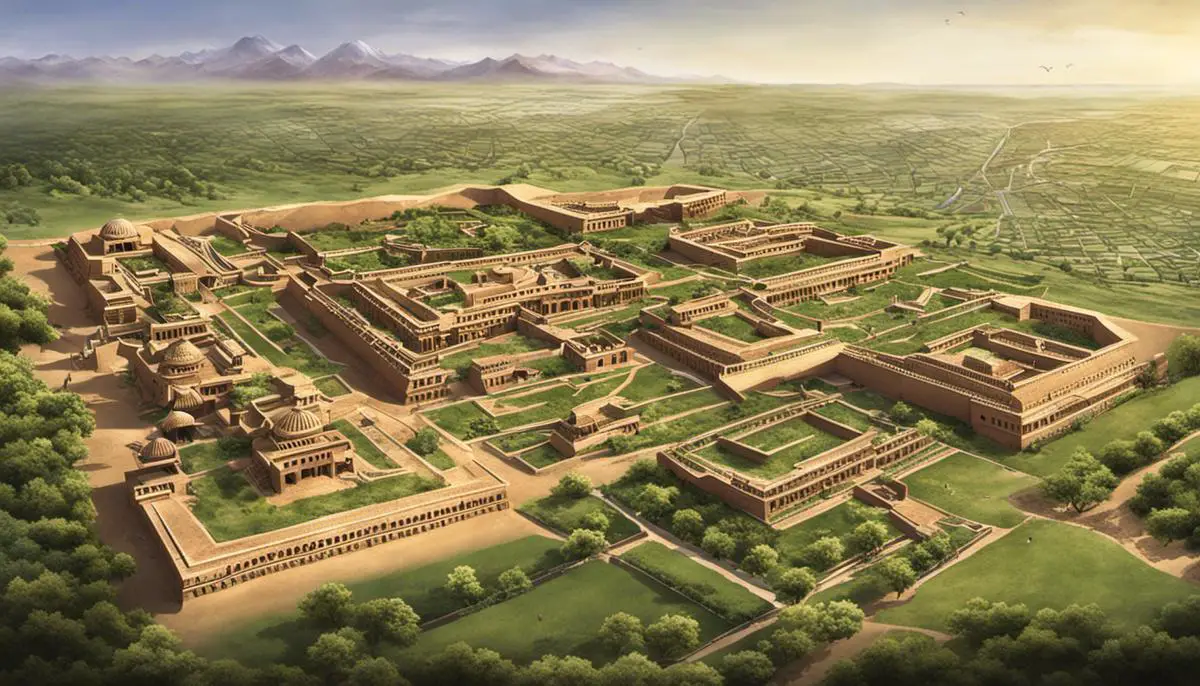
Craftsmanship and Trade
The Artistry of the Indus Valley Civilization
Dating back to around 3300 BC, the Indus Valley citizens demonstrated exceptional skills in various crafts. Their impeccable artistic creations are a testament to their advanced knowledge and application of the arts and crafts.
Pottery production was a predominant area of their craftsmanship. Both plain and painted pottery were seen, often adorned with geometric and creature motifs. The pottery from this era was typically wheel-made from refined clay and fired at high temperatures, leading to fine quality ware. It bore a cream, red or black color and frequently featured black designs. The pots, made of terra-cotta, were generally simple yet graceful.
Another field showcasing the Indus Valley Civilization’s craftsmanship was bead production. Their beads were crafted from semi-precious stones, terracotta, gold, and shells alike. These beads were versatile in use, often strung together as necklaces or bracelets. A testament to their advanced beadwork technology was the range of materials used and the drills employed to perforate the beads.
Indus Valley Metallurgy
Metallurgy was another domain where the civilization innovated. The use and knowledge of metals such as bronze, tin, and lead was widespread. The Indus Valley people were among the first to develop a technique of mixing tin with copper to create bronze—an alloy stronger than its two components, making it a valuable innovation that played an important role in their craftsmanship.
Indus Valley Trade Networks
Trade was a critical part of the Indus Valley Civilization, facilitating not just economic development but also cultural exchange. The footprints of internal trade are visible through the presence of standardized weights and measures across the civilization. The seals, a distinctive trademark of the Indus Valley Civilization, were majorly used in trade transactions. These seals, often made from steatite, were usually rectangular in shape and contained animal motifs.
The civilization also had extensive international trade networks. Archaeological evidence suggests that the Indus Valley Civilization had maritime trade links with civilizations in the Persian Gulf and Mesopotamia (modern-day Iran and Iraq). They had also established trade relations with civilizations in Central Asia and the Deccan plateau, as indicated by the various artifacts found in these regions that originated from the Indus Valley. Artifacts such as beads, seals, pottery, and more, have been found in Mesopotamia, which reflect the trade relationship between these two ancient civilizations.
The Indus Valley Civilization’s elaborate craftsmanship and intricate trade networks are strong indicators of its advanced socio-economic state and revolutionary capacity for innovation within that historical period.
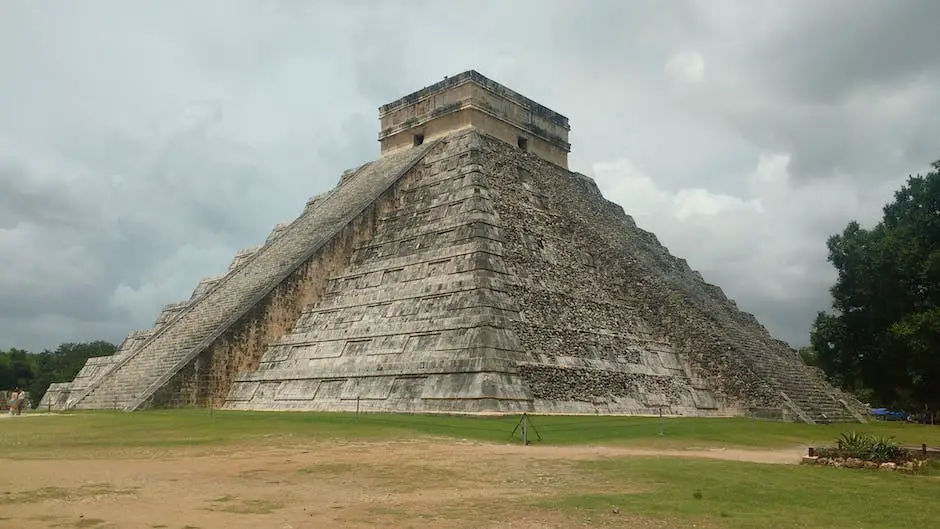
Script and Language
Indus Valley Civilization: Early Architects of Pictographic Communication
The Indus Valley Civilization, thriving from around 3300 to 1300 BC, introduced a written language system that, to this day, leaves scholars in the fields of archeology and linguistics filled with fascination. Located predominantly in what is now Pakistan and northwest India, this former society left behind approximately 5,000 inscriptions. Most of these, found on seals, amulets, and other miniature artifacts, are still undeciphered to the present day.
These scripted inscriptions boast a pictographic system made up of over 400 unique symbols. Each marking could potentially represent a phonetic sound, an entire word, or even a concept alike to ancient Egyptian hieroglyphs. The scope of subjects covered in these scripts is highly diverse, suggesting their usage was wide-ranging from administrative record keeping, spiritual ceremonies, to possibly even storytelling.
Challenges in Interpreting the Script of the Indus Valley Civilization
Despite numerous attempts, the script remains indecipherable due to several reasons. One of the main challenges is the brevity of the inscriptions. Most of them are very short, containing an average of only five signs, which makes it difficult to discern grammatical structures or patterns. The lack of bilingual texts, akin to the Rosetta Stone which helped decipher the Egyptian hieroglyphs, poses another significant hurdle.
A number of competing theories exist about the nature and interpretation of the script. Some scholars propose that it is a logo-syllabic script, where symbols can represent both sounds and whole words. Others suggest it is non-linguistic and instead functions as a system of symbolic or religious representation.
The Role of Seals in the Indus Valley Civilization
Seals played a crucial role in the Indus Valley Civilization, predominantly used for trading purposes. They featured intricate designs including a wide variety of animals such as tigers, elephants, and mythical creatures, indicative of the civilization’s advanced craft techniques. The seals also bore short inscriptions, viewed as possible markers of ownership or symbols of authority and power. Many of the seals were found in the ruins of Mohenjo-daro and Harappa, two of the civilization’s principal city-states.
A Lingual Enigma: Deciphering the Ancient Script
The enigmatic language of the Indus Valley civilization remains a topic of intriguing mystery. However, what is undeniable is that their pictographic script manifests a high level of innovation. The civilization’s use of unique symbols for communication, along with seals for trade and personal identification, reflect their advanced societal structure. This undeciphered script fascinates modern-day linguists and historians, who persistently explore it with fervor. Currently, if a breakthrough were to occur, it could unearth profound revelations about the civilization’s significant contributions to human history.
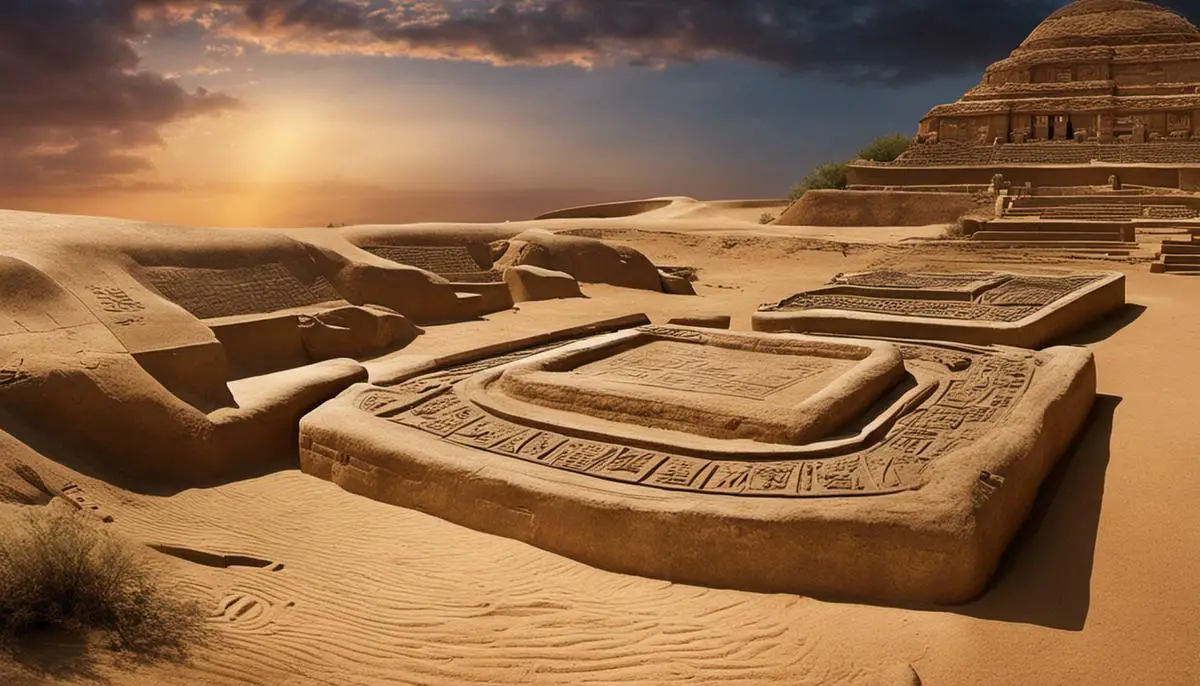
Scientific Innovations
The Calculated Ingenuity: Mathematical Advances in the Indus Valley Civilization
The Indus Valley civilization, while mysterious, showcased revolutionary advances in mathematical concepts. These advances, notably, the invention of the decimal measuring system have been integral to the development of many mathematical systems globally that followed. Their proficiency in geometry is remarkable, underlined by the meticulously planned urban layout; perpendicular intersecting streets, strategic drainage systems, and homogeneously constructed brick buildings. This uniform architectural design gives testament to their high level of civilization.
Medical Innovations in Indus Valley Civilization
Medical science was another field where the Indus Valley Civilization made significant innovations. Seals and figurines suggest that they had knowledge of yoga and meditation. They had an understanding of basic dentistry, with evidence showing they practiced dental drilling for cosmetic and possibly therapeutic purposes.
Many herbs have been discovered during the excavation of their urban sites, suggesting the existence of a herbal medical system. Archaeologists also discovered terracotta cakes, which were probably used as hot compresses in treating ailments. The advanced drainage and sanitation system indicates that they understood the value of cleanliness and hygiene.
Astronomical Innovations in Indus Valley Civilization
The Indus people had a working knowledge of astronomy, which was integral to their agricultural and trading activities. They aligned their cities according to the cardinal points, proving their knowledge of the Earth’s rotation. The sophistication of the Indus city planning implies an understanding of the movement of celestial bodies and the change in seasons.
Many scholars suggest that an artifact known as the ‘Indus seal’ might represent a star chart or a lunar calendar, further testifying to their astronomical prowess. Additionally, they discerned the concept of solar calendar, as evidenced by their calendars dividing the year into 365 days.
Metallurgical Innovations in the Indus Valley Civilization
Metallurgy was another sphere where the Indus Valley Civilization excelled. They developed processes for smelting and alloying metals, including copper, tin, and lead. Copper statues and bronze utensils found at various Indus sites highlight their advanced metalworking techniques. Their knowledge of ‘lost wax’ casting and methods of creating uniform metal bricks for trading speak of their highly refined metallurgical knowledge.
The extensive use of metals and standardization of artefacts found at different sites across the civilization reveal their mastery in metallurgy, which was much ahead of their time. Their technological sophistication was an enabler in propelling them to urbanization and establishing trade links with far-off civilizations.
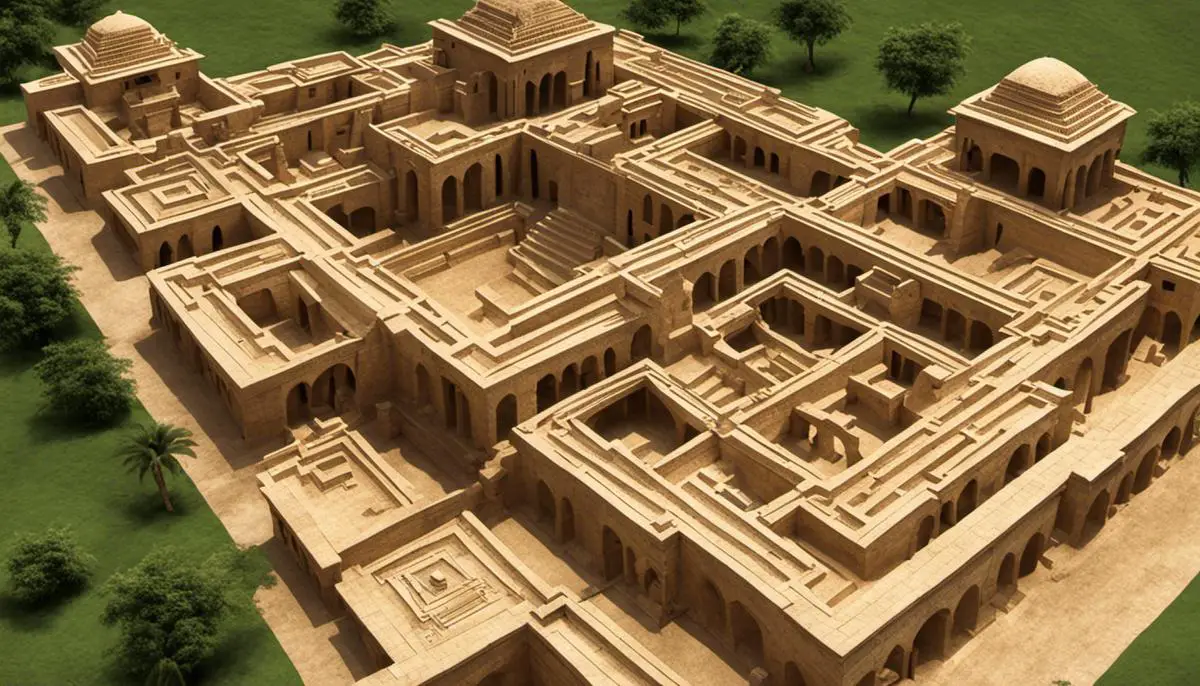
Indeed, the innovations of the Indus Valley Civilization are a testament to the capacity of humanity for learning, creativity, and advancement even in its earliest stages. Their cutting-edge development in agriculture, architectural mastery, remarkable craftsmanship, mysterious script and pioneering scientific discoveries, are all evidences of their brilliant minds and industrious nature. The echoes of their ancient innovations can still be seen in our world today, adding a richness to our present while providing a valuable beacon for our future. It is an engrossing reflection on the ceaseless wheel of human progress, reminding us of the brilliance innate in our history, and provoking inspiration for our own modern innovations.
![]()
